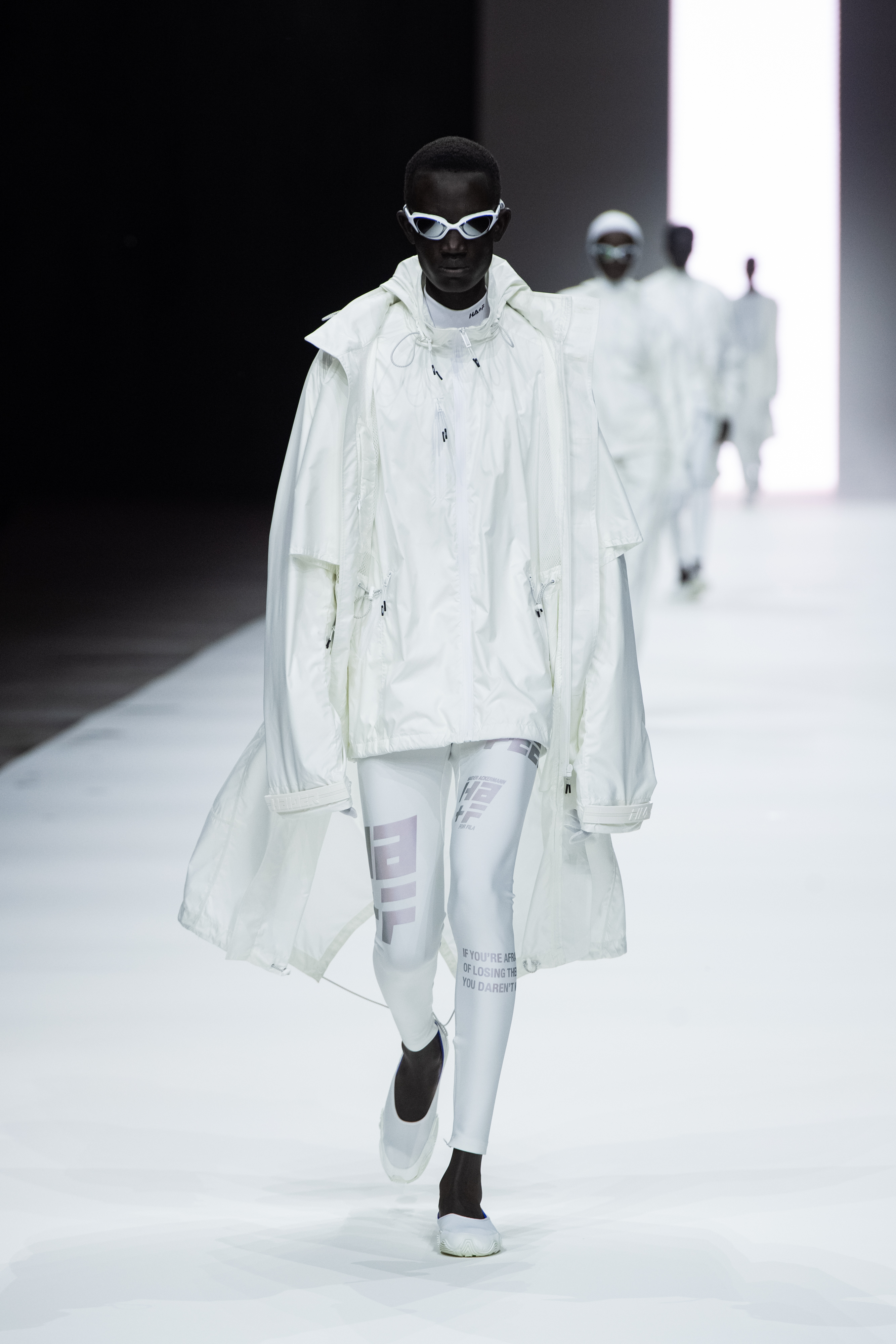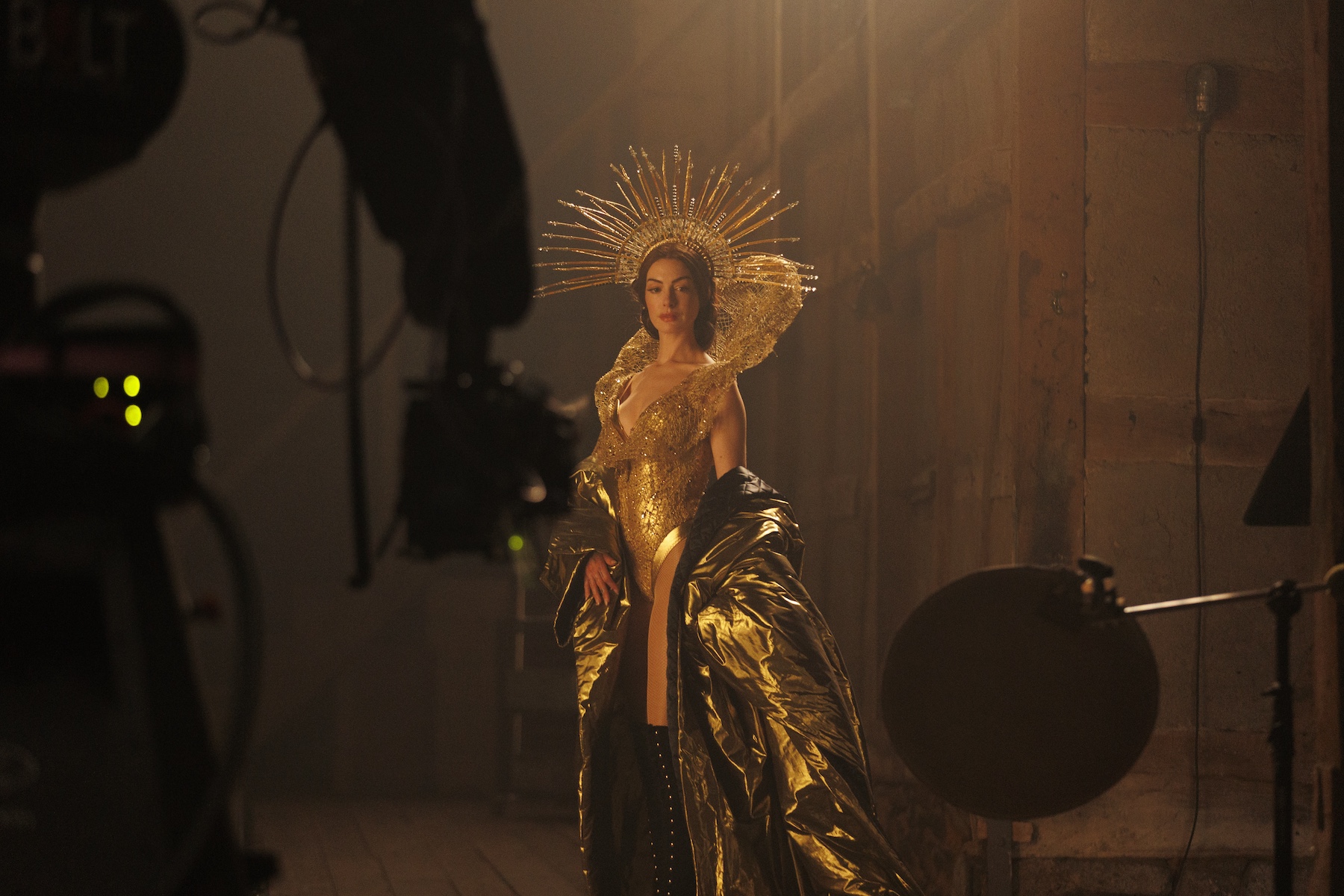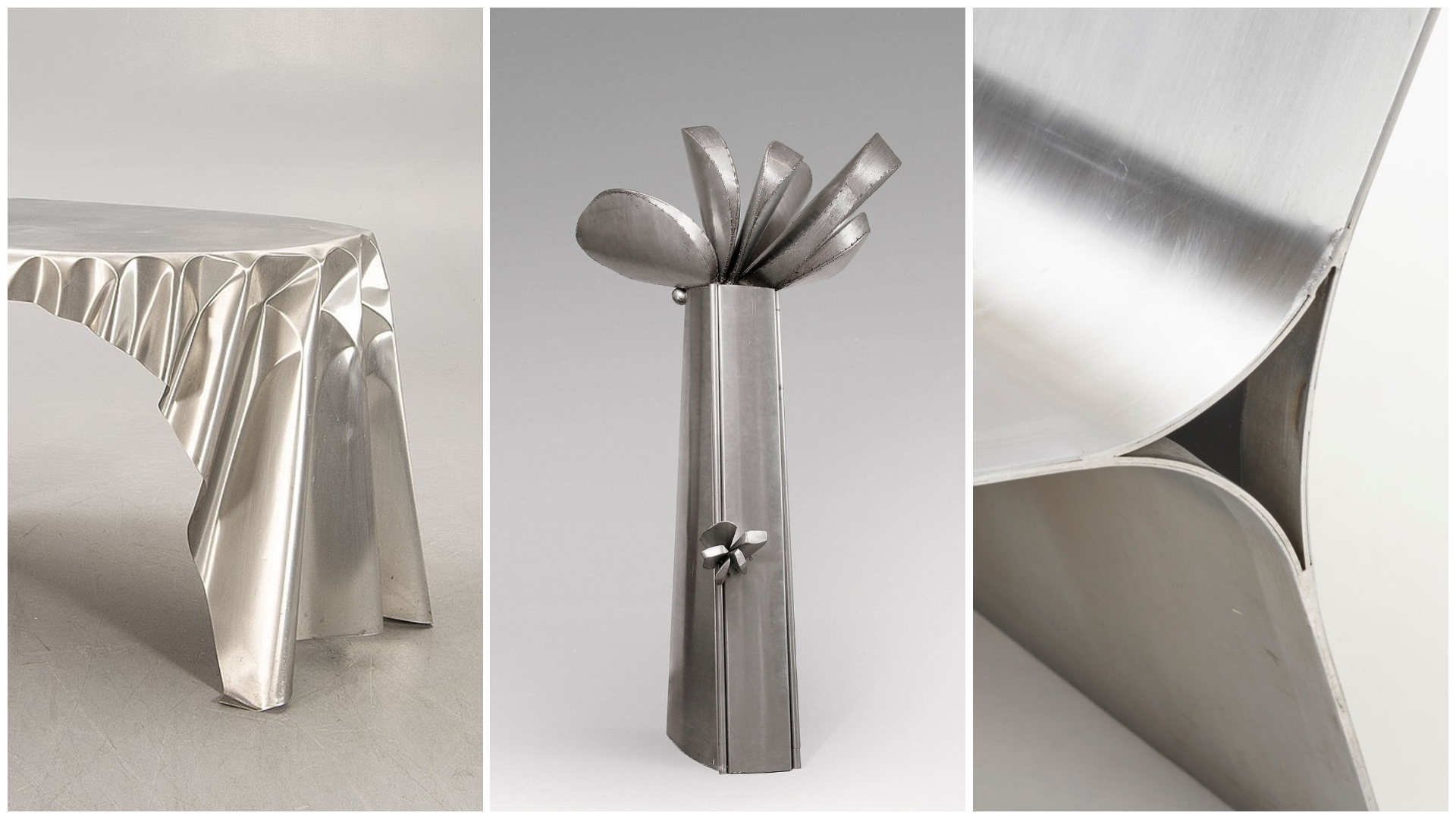
‘Electricity, energy… stripping down to speed forward,’ began the collection notes for Haider Ackermann’s collaboration with Italy-founded sportswear brand Fila, shown in Manchester this past Thursday. Presented in the vast Mayfield Depot – best known for hosting The Warehouse Project, a series of club nights which takes place yearly – the collection saw Colombia-born Ackermann, who was returning to the runway after a two-year hiatus, meld his expressive approach to colour and line with the bold sportswear codes of Fila.
Shown on a stark-white catwalk which ran the length of the otherwise industrial space, the collection itself – officially titled Haider Ackermann + Fila – began with a consideration of British youth cultures, and what Ackermann called ‘the neatness and visual punch’ he associated with their various dress codes. The designer said he was particularly drawn to the northern city of Manchester for its historic links with sport, music and nightlife, and the subcultures each has spawned. The cult Ben Kelly-designed Haçienda nightclub – which first opened in the northern city in the 1980s – was one such reference, its famed hazard-striped columns evoked in the collection’s use of luminous colour and graphic motifs (members of New Order, early investors in the club, attended Ackermann’s post-show dinner).
Haider Ackermann + Fila in Manchester

Haider Ackermann + Fila
The collection refined what Ackermann called the ‘core elements of the sports wardrobe’ – among them, tracksuits, leggings and tennis shorts, as well as swimming trunks and athletic body suits – seeing clean, body-contouring silhouettes arrive in an ‘electric glow’ of colour, from optic white to acidic shades of pink, blue, green and yellow. ‘Flowing on or over the body, or taut and revealing,’ said the collection notes of the various pieces, which placed particular focus on physicality. ‘The body, either revealed or just felt, is the real protagonist, delivering a message of empowerment and individuality’. Elsewhere, a graphic logo created for the collaboration looped around the necks of sleek all-in-ones, or on the back of billowing technical parka jackets, while technical slippers and running-inspired sneakers ‘add velocity’.
Swedish tennis player Björn Borg, who memorably wore a Fila striped polo shirt during his historic Grand Slam runs in the 1970s, was another reference point for Ackermann. Abbreviated checkered shorts, coloured polo shirts, and requisite headband provided a contemporary riff on one of sportswear’s most memorable looks. ‘He is a reference, his elegance and nobility,’ Ackermann said backstage. ‘That’s what I was reaching for, to find nobility, strength and elegance.’

Haider Ackermann + Fila
Haider Ackermann + Fila marks the latest chapter in a number of collaborative projects undertaken by Fila in recent years, notably with Glenn Martens’ Y/Project and London-based designer Roksanda Ilinčić. The choices are often unexpected for a sportswear label – part of the reason Ackermann says he originally agreed to take part in the project. ‘Unknown things make my heart beat faster… so I willingly took on the challenge,’ he said after the announcement of the collaboration in September. ‘I believe in the power of the unexpected.’

Haider Ackermann + Fila
Receive our daily digest of inspiration, escapism and design stories from around the world direct to your inbox.
Jack Moss is the Fashion & Beauty Features Director at Wallpaper*, having joined the team in 2022 as Fashion Features Editor. Previously the digital features editor at AnOther and digital editor at 10 Magazine, he has also contributed to numerous international publications and featured in ‘Dazed: 32 Years Confused: The Covers’, published by Rizzoli. He is particularly interested in the moments when fashion intersects with other creative disciplines – notably art and design – as well as championing a new generation of international talent and reporting from international fashion weeks. Across his career, he has interviewed the fashion industry’s leading figures, including Rick Owens, Pieter Mulier, Jonathan Anderson, Grace Wales Bonner, Christian Lacroix, Kate Moss and Manolo Blahnik.
-
 Top 10 gadgets of 2025, as chosen by technology editor Jonathan Bell
Top 10 gadgets of 2025, as chosen by technology editor Jonathan BellWhat were the most desirable launches of the last 12 months? We’ve checked the archives to bring you this list of the year’s ten best devices
-
 2026 will be all about style on screen. Here are some fashionable films to look out for
2026 will be all about style on screen. Here are some fashionable films to look out forFrom the return of Devil Wears Prada to a slew of stylish A24 projects, eight fashionable films to add to your watch list in 2026
-
 An inox-fanatic's love letter to stainless steel
An inox-fanatic's love letter to stainless steelUltimate stainless steel fan Levi Di Marco has been documenting inox designs on his social media platform @tutto_inox: we asked him to tell us about his not-so-mild obsession and share some of his favourite examples of inox design